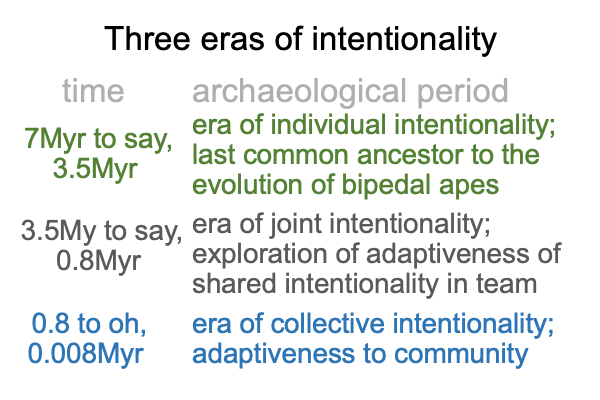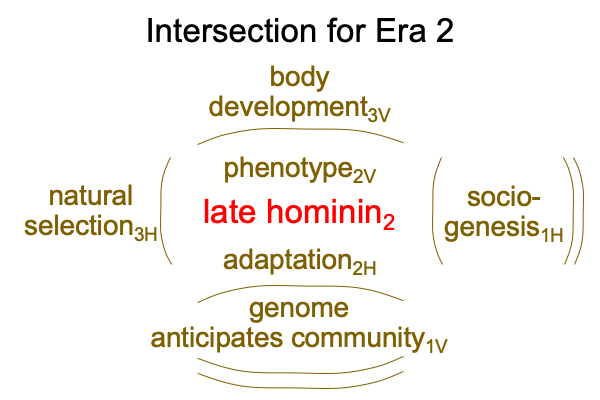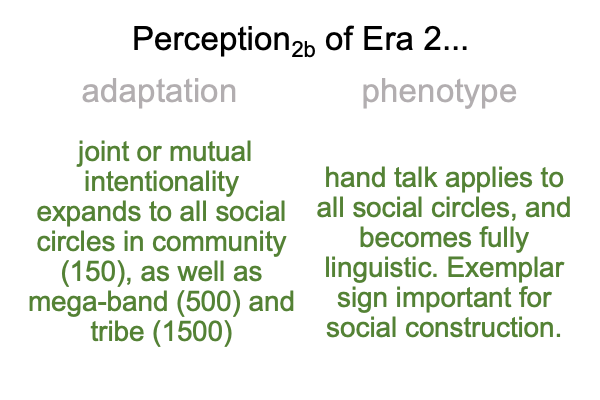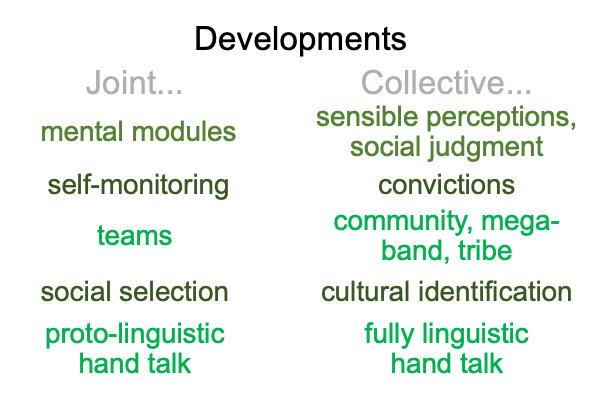0329 Tomasello identifies three epochs in the evolution of hominin thinking, starting with the last common ancestor (LCA) and ending… when?.. how about 7800 years ago, with the first singularity?
Here is how Razie Mah associates Tomasello’s eras of intentionality to the archaeological record.

0330 This should look familiar by now.
0331 Chapter four is titled, “Collective Intentionality”.
0332 Here, I continue my game (see points 0271 and 0274)
I imagine the following intersection for human evolution entering into my slot for species impressa2a. I ask myself, “What is a sensible interpretation of the phenotype and adaptation for the era of collective intentionality, lasting between the beginning of the domestication of fire to the first singularity, covering from around 0.80 to around 0.008Myr?”

0333 What is the phenotype2V and the adaptation2H for the era of collective intentionality,
What is my perception2b?
Here is a picture.

0334 Collective intentionality2H both incorporates and extends the adaptation of joint attention2H. Joint attention2Hevolves in the milieu of obligate collaborative foraging. Teams1H are the most important social circles undergoing natural selection. Teams increase in number and diversity. The domestication of fire elevates that number and diversity. Brain size increases with later hominins, indicating that larger groups become relevant. These larger groups include community (150), seasonal mega-band gatherings (450) and occasional tribal gatherings (1500). Community is key.
Collective attention2H will adapt to dramatic Pleistocene climate shifts, intergroup competition and novel environments and ecologies.
0335 Here is comparison of developments, according to each era.

